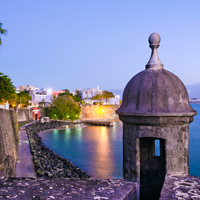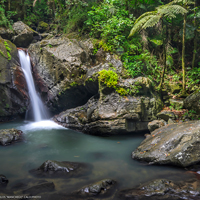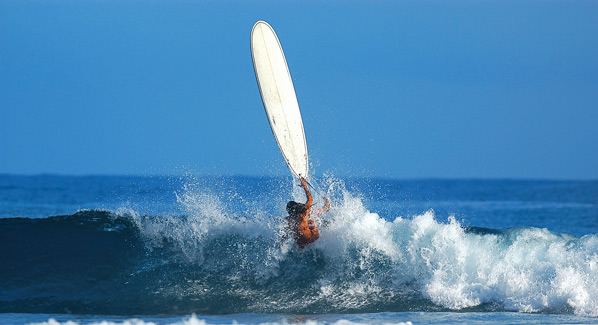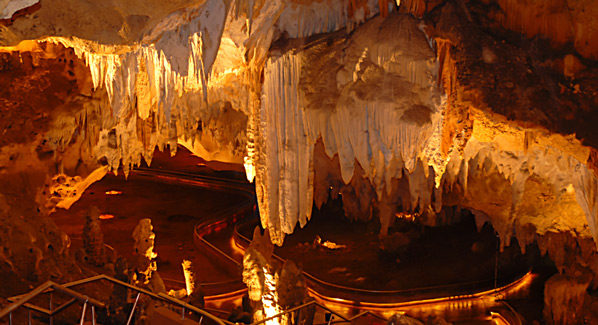Luxury means different things to different people. It could be about the setting, the service, the food or the amenities. Whatever your definition of a luxurious Caribbean vacation, you’ll likely find it at one of these new or recently-refurbished properties, which represent the epitome of island-style indulgence.
Ritz-Carlton Aruba
Luxury rose to new heights when the Ritz-Carlton opened on Aruba’s fabled Palm Beach in November of 2013. The entire top floor of this 320-room property is devoted to an exclusive Club Level. Here, guests enjoy unrivaled views of the powder-white beach and the Caribbean Sea, both from private balconies and from the Club Lounge, where floor-to-ceiling windows provide a stunning backdrop, complementary meals and snacks are available throughout the day, and a dedicated concierge is always on call.

The Ritz-Carlton sits on Aruba’s Palm Beach, where white sands and bright turquoise waters create stunning panoramas. Floor-to- ceiling windows in the lobby bar take in the view. Photo: Don Riddle/Ritz-Carlton
The Ritz-Carlton is home to the island’s largest spa, offering both traditional and locally influenced treatments that feature aloe, coconut and cactus blended with healing components of herbs and rich earth minerals. Dining options include the signature BLT Steak restaurant, serving a world-class selection of USDA choice meats. Four additional dining experiences add Italian, seafood and an Argentine grill to the mix. The property also includes a 24-hour casino, fitness center, beach club, children’s programs and a full range of waters sports through Red Sail Sports.
Belle Monte Farms at Kittitian Hill, St. Kitts
Luxury meets sustainability at St. Kitts’ $600-million Kittitian Hill project. The visionary team behind this development describes it as a community where guests can immerse themselves in the vibrant beauty of the West Indies, enjoy fresh food foraged from the land and sea, and connect with the island’s rich culture. The first phase of this development, Belle Monte Farms, includes a collection of stand-alone guesthouses and villas, each built by island craftsmen to honor the region’s vernacular styles. Set amid lush natural landscaping, dwellings offer private infinity pools, garden baths surrounded by tropical foliage and private verandahs with mountain, garden and sea views.

The Kittitian Hill development blends luxurious accommodations into a natural environment where there is an emphasis on sustainability and respect for the island’s traditional culture. Photo: Kittitian Hill
Set on a former sugar plantation, the 400-acre Kittitian Hill project is home to a working organic farm that supplies much of the produce served at onsite restaurants, where cuisines are inspired by executive Chef Cristophe Letard’s farm-to-table philosophy. In the works is the 18-hole Irie Fields golf course, which provides challenging play in a setting that encompasses gardens and fruit trees—it’s being called the world’s most edible golf course. Additional elements of the community include a spa with indigenous treatments and a village with more eateries; shops, galleries and artisan’s studios will open as the development unfolds.
Condado Vanderbilt Hotel San Juan, Puerto Rico
Luxury meets tradition at San Juan’s Condado Vanderbilt and takes guests back to the days of the Roaring 20’s. This historic hotel opened in 1919, and over the years attracted visiting dignitaries, royalty and celebrities like Bob Hope and Errol Flynn to the shores of the vibrant Condado district, where iconic nightclubs and lounges heated up the tropical nightlife. Nearly a century later today’s guests will find nostalgic elements mixed with modern amenities and ongoing updates. The hotel’s culinary scene rose to new heights when Michelin-starred Chef Juan Jose Cuevas took the helm at the acclaimed 1919 restaurant. Most recently, a second internationally acclaimed dining spot opened in the form of Ola, where local ingredients are the focus.

Dark leather furnishings, iconic artwork and spiral staircases set the tone at San Juan’s historic Condado Vanderbilt Hotel. A roaming champagne cart delivers tempting libations. Photo: Magda Biernat/Condado Vanderbilt
A sweeping $200 million revitalization of the hotel was completed in December 2014, with more than 400 elegant guestrooms and suites re-imagined with inspirations from the hotel’s oceanfront setting and eclectic history. A sleek décor features dreamy neutral hues and textures representing ocean tides, dark wood furniture and plenty of brass accents. The on-site spa includes an aromatherapy bar and the island’s first Hammam. In addition to the beach, guests can take in the trade winds from a palm-lined roof top pool with butler service.
Malliouhana, An Auberge Resort, Anguilla
Luxury kicks off its shoes as one of the Caribbean’s favorite getaway resorts returns after a major renovation and a three-year closure. Anguilla’s Malliouhana, known for its intimacy, open-air setting and stellar service, is now under the Auberge Resort umbrella. The location can’t be beat, with 360-degree views of the sea and a gorgeous stretch of sand at Meads Bay, one the island’s best beaches. The renovation transformed the property’s 44 ocean view rooms and suites with a fresh island palette of mango, mint, saffron and white to blend the spaces with the environment.

Anguilla’s Malliouhana resort overlooks Meads Bay, which is one of the island’s finest beaches. Water and beach views abound, both from guest rooms and the top-rated restaurant. Photo: Malliouhana
Guest rooms also showcase some of Malliouhana’s original treasures, which include a collection of animated jungle scenes depicting the Garden of Eden, and painted by distinguished Haitian artist Jasmin Joseph. Also new are a pair of infinity-edged swimming pools and a signature Auberge Spa, which is cloistered in a setting of ponds, tropical vines and flowering plants. On an island known for its culinary expertise, the signature restaurant sets new standards in an open-air space situated on the bluff overlooking the sea. Under the direction of Executive Chef Jeremy Bearman, the menu embraces Caribbean flavors and traditions such as jerk spices, passion fruit, tamarind and guava.
Paradise Beach, Nevis
Luxury becomes personal at Paradise Beach. This new arrival to Nevis takes in a small, all-villa property that delivers the ultimate in private settings for extended families or groups of friends. The resort’s seven Balinese-style thatch-roofed villas include dramatic details such as 20-foot vaulted ceilings, outdoor dining areas and ocean views. Each three or four bedroom home also includes spacious common living area, full kitchens and private patios with pools.

Designed for families, friends and small corporate retreats, the garden and beach villas of the Paradise Beach Resort combine privacy with a wealth of on-call personal services. Photo: Ken Haydent/Paradise Beach Resort
Kitchens are outfitted with everything needed to prepare memorable meals, but if cooking isn’t on your agenda, the on-site concierge can arrange a visit from one of the island’s accomplished chefs, who can prepare a multi-course dinner or whip up appetizers and cocktails for the entourage around your pool. Your personal butler can summon a masseuse, or a certified personal trainer for those who want to maintain their fitness program. If not, a private beach bar awaits, and it’s just a short walk down Pinney’s Beach to Sunshine’s, where one of their famous Killer Bee cocktails is guaranteed to put you in that relaxed island state of mind.







































